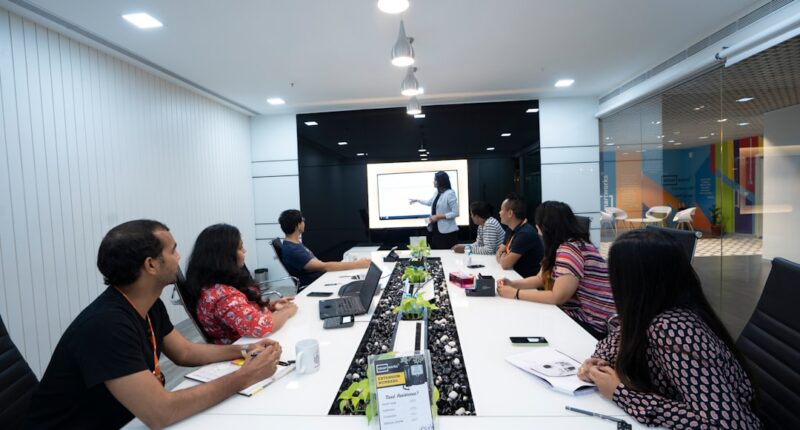Mobile gaming influencer marketing has emerged as a powerful strategy for game developers and marketers looking to reach a broader audience. This approach leverages the popularity and credibility of influencers—individuals who have established a significant following on social media platforms, streaming services, or gaming communities. These influencers often have a deep connection with their audience, which can translate into higher engagement rates and more effective marketing campaigns.
The essence of this marketing strategy lies in the ability to tap into the influencer’s established trust and rapport with their followers, making it easier to promote new mobile games or updates to existing titles. The mobile gaming industry has seen exponential growth in recent years, with millions of players worldwide engaging with various genres, from casual puzzle games to competitive battle royales. As a result, the competition among game developers has intensified, necessitating innovative marketing strategies.
Influencer marketing stands out as a particularly effective method because it allows brands to reach niche audiences that are already interested in gaming content. By collaborating with influencers who resonate with their target demographic, game developers can create authentic promotional content that feels less like an advertisement and more like a recommendation from a trusted source.
Key Takeaways
- Mobile gaming influencer marketing can help reach a large audience and increase brand awareness.
- Identifying the right influencers for your mobile game is crucial for the success of your campaign.
- Creating engaging content for mobile gaming influencer campaigns can help capture the attention of the target audience.
- Leveraging social media platforms can maximize the reach of your mobile gaming influencer campaign.
- Utilizing influencer networks and collaborations can help expand the reach and impact of your mobile gaming influencer campaign.
Identifying the Right Influencers for Your Mobile Game
Defining the Target Audience
Choosing the right influencers is crucial for the success of any mobile gaming influencer marketing campaign. The first step in this process is to define the target audience for the game. Understanding the demographics, interests, and gaming preferences of potential players will help marketers identify influencers who align with these characteristics.
Identifying Suitable Influencers
For instance, if a game is designed for younger audiences, partnering with influencers who create content aimed at children or teenagers would be more effective than collaborating with those who cater to an older demographic. Once the target audience is established, marketers should conduct thorough research to identify potential influencers. This involves analyzing their content style, engagement rates, follower counts, and overall reputation within the gaming community.
Evaluating Influencer Performance
Tools such as social media analytics platforms can provide valuable insights into an influencer’s performance metrics. Additionally, examining the influencer’s previous collaborations can reveal whether they have successfully promoted similar games in the past. For example, an influencer known for their expertise in strategy games may be more suitable for promoting a new mobile strategy title than one who primarily focuses on casual games.
Creating Engaging Content for Mobile Gaming Influencer Campaigns

The content created for influencer campaigns must be engaging and tailored to both the influencer’s style and the game’s unique features. One effective approach is to encourage influencers to showcase gameplay through live streams or recorded videos. This allows potential players to see the game in action, providing a more immersive experience than traditional advertisements.
Influencers can highlight key aspects of the game, such as graphics, mechanics, and storyline, while also sharing their personal experiences and tips. This authentic presentation can significantly enhance viewer interest and drive downloads. In addition to gameplay videos, influencers can create various types of content that resonate with their audience.
For instance, they might host giveaways or contests related to the game, encouraging followers to participate and engage with the brand. Collaborating on unique challenges or themed events can also generate excitement and foster community involvement. For example, an influencer could challenge their followers to achieve specific milestones within the game, creating a sense of competition and camaraderie among players.
Such interactive content not only promotes the game but also builds a sense of community around it.
Leveraging Social Media Platforms for Maximum Reach
| Social Media Platform | Number of Users (in millions) | Engagement Rate (%) | Reach Potential |
|---|---|---|---|
| 2800 | 6.5 | High | |
| 1000 | 4.2 | High | |
| 330 | 3.8 | Medium | |
| 740 | 5.1 | High |
Social media platforms play a pivotal role in mobile gaming influencer marketing campaigns. Each platform offers unique features that can be harnessed to maximize reach and engagement. For instance, platforms like Instagram and TikTok are ideal for short-form video content that captures attention quickly.
Influencers can create bite-sized gameplay clips or highlight reels that showcase exciting moments from the game, enticing viewers to learn more or download it. YouTube remains a dominant platform for long-form content, making it an excellent choice for in-depth reviews or tutorials. Influencers can delve into gameplay mechanics, provide walkthroughs, or share strategies that help players navigate challenges within the game.
Additionally, platforms like Twitch allow for real-time interaction between influencers and their audience during live streams. This interactivity fosters a sense of community and encourages viewers to engage directly with both the influencer and the game being promoted.
Utilizing Influencer Networks and Collaborations
Influencer networks can significantly enhance the effectiveness of mobile gaming marketing campaigns by providing access to a broader pool of influencers. These networks often consist of established relationships between brands and influencers, streamlining the collaboration process. By leveraging these networks, marketers can identify multiple influencers who align with their campaign goals and target audience without extensive individual outreach.
Collaborations between influencers can also amplify reach and engagement. For example, hosting joint live streams or creating collaborative content allows influencers to cross-promote each other’s channels while introducing their audiences to new games. This strategy not only increases visibility but also fosters a sense of community among followers of different influencers.
By creating a shared experience around a mobile game, marketers can tap into diverse audiences and generate buzz that extends beyond individual influencer followings.
Measuring the Success of Your Mobile Gaming Influencer Campaign

Setting Clear Metrics for Success
To determine the effectiveness of an influencer marketing campaign, it is essential to establish clear metrics for success from the outset. Key performance indicators (KPIs) may include engagement rates, download numbers, social media shares, and overall brand awareness. Tracking these metrics allows marketers to assess how well the campaign resonates with the target audience and whether it achieves its intended goals.
Gaining Insights with Analytics Tools
Analytics tools can provide valuable insights into user behavior following an influencer’s promotion. For instance, tracking referral links can help identify how many downloads were generated directly from an influencer’s content. Additionally, monitoring social media engagement—such as likes, comments, and shares—can indicate how well the content resonated with viewers.
Refining Strategies for Future Success
By analyzing this data post-campaign, marketers can refine their strategies for future collaborations and better understand what types of content drive results.
Building Long-Term Relationships with Mobile Gaming Influencers
Establishing long-term relationships with mobile gaming influencers can yield significant benefits for brands over time. Rather than viewing influencer partnerships as one-off campaigns, marketers should focus on nurturing ongoing collaborations that foster loyalty and authenticity. This approach allows influencers to become genuine advocates for the brand, leading to more impactful promotions.
To build these relationships, brands should prioritize open communication and collaboration with influencers. Providing them with exclusive access to new game features or updates can make them feel valued and invested in the brand’s success. Additionally, recognizing their contributions through shout-outs or featuring them in promotional materials can strengthen the partnership further.
By cultivating these relationships over time, brands can create a network of dedicated advocates who are genuinely passionate about promoting their mobile games.
Adapting to the Ever-Changing Mobile Gaming Landscape
The mobile gaming industry is characterized by rapid changes in trends, technology, and player preferences. As such, marketers must remain agile and adaptable in their influencer marketing strategies. Staying informed about emerging trends—such as new gaming genres or popular streaming platforms—can help brands identify opportunities for collaboration with relevant influencers.
Moreover, understanding shifts in player behavior is crucial for tailoring marketing efforts effectively. For instance, if data indicates that players are increasingly gravitating toward multiplayer experiences or social gaming features, brands should consider partnering with influencers who specialize in these areas. By continuously monitoring industry developments and player preferences, marketers can ensure that their influencer campaigns remain relevant and impactful in an ever-evolving landscape.
In conclusion, mobile gaming influencer marketing presents a dynamic opportunity for brands to connect with audiences in authentic ways. By understanding the nuances of this approach—from identifying suitable influencers to creating engaging content—marketers can effectively leverage influencer partnerships to drive awareness and downloads for their mobile games. As the industry continues to evolve, staying adaptable and fostering long-term relationships will be key to sustained success in this competitive space.








